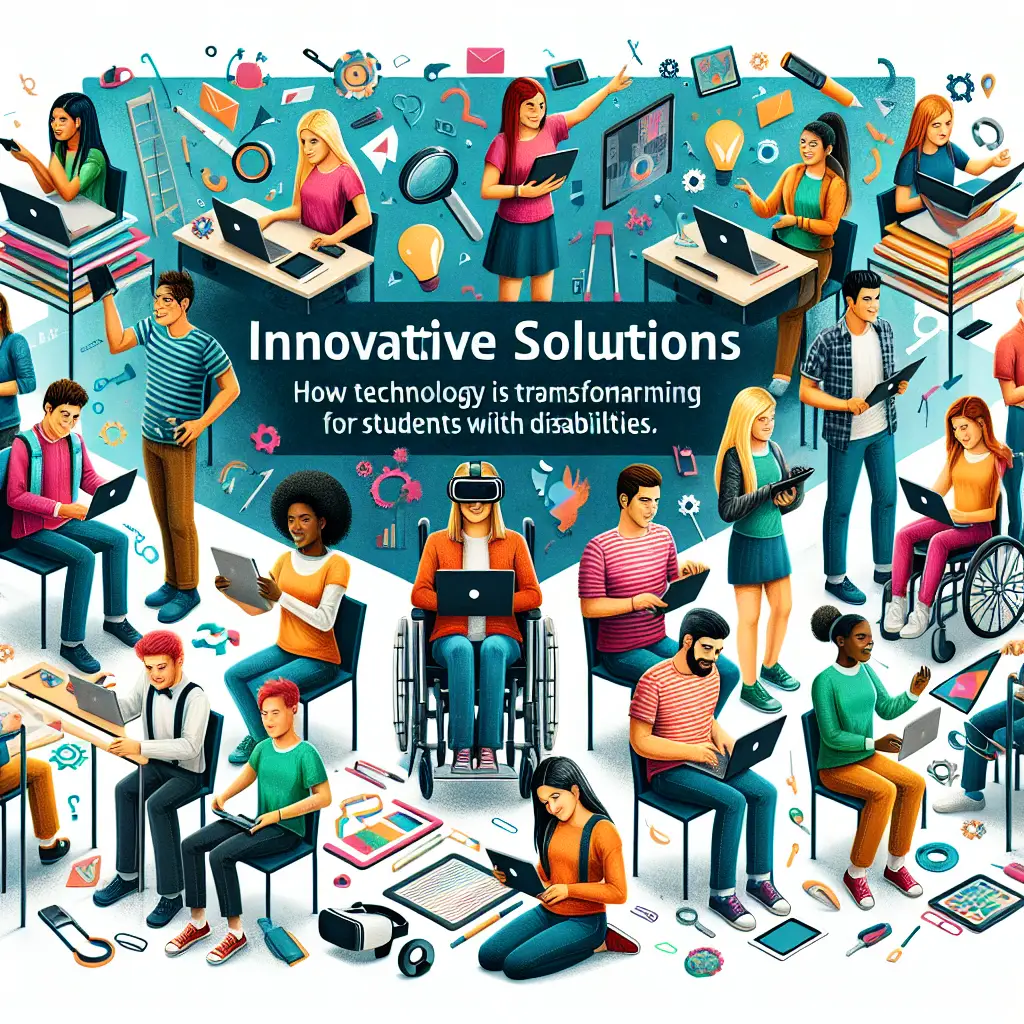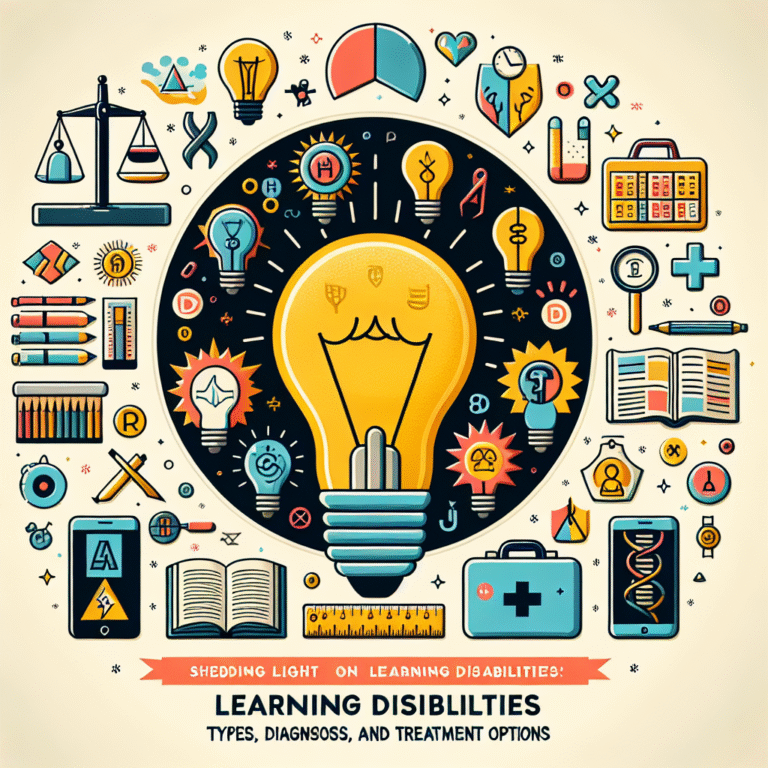
Innovative Solutions: How Technology is Transforming Learning for Students with Disabilities
Introduction
In recent years, the advancement of technology has revolutionized countless sectors, and education is no exception. For students with disabilities, innovative technological solutions have not merely improved learning outcomes; they have transformed what is possible in classroom settings. These changes are not just significant—they are essential in creating inclusive, equitable educational environments where every student can thrive. By embracing digital tools and resources, educators and institutions harness the potential of technology to bridge gaps, nurture talents, and empower students with diverse learning needs.
In this article, we delve into the innovative solutions that are changing the face of education for students with disabilities. From personalized learning platforms to assistive devices, we will explore the myriad ways in which technology is leveling the playing field. Case studies, data-driven insights, and expert opinions will illuminate the transformative power of technology in education, driving home the importance of embracing these innovative solutions: how technology is transforming learning for students with disabilities.
Understanding the Landscape
The Importance of Inclusivity in Education
Inclusivity in education is not just a choice; it’s a necessity. About 15% of the global population experiences some form of disability, according to the World Health Organization (WHO). Within school systems, this translates to millions of students who face barriers in their educational journeys. An inclusive educational environment ensures that all students, regardless of their abilities, receive equitable access to resources and opportunities.
The Role of Technology
As technology continues to advance, its utilization in educational settings has given rise to numerous innovative solutions. Technology serves as a powerful equalizer, providing students with disabilities the tools needed to engage with learning materials effectively. From speech recognition software to interactive learning applications, the scope of tools available is continually expanding.
Innovative Solutions in Action
Personalized Learning Platforms
One of the key innovations transforming education is the development of personalized learning platforms. These platforms adapt to the individual learning styles, preferences, and challenges of students:
Case Study: DreamBox Learning
DreamBox Learning is a platform that provides personalized math instruction for students of all abilities. For students with disabilities, the platform’s adaptive learning algorithms adjust to their pace while offering specific feedback tailored to their needs. Reports have shown that students using DreamBox outperformed their peers in traditional settings, reinforcing the impact of personalized learning solutions.
Analysis
DreamBox illustrates a significant innovation in personalized learning. By leveraging data analytics and adaptive technologies, it supports students with disabilities in a meaningful way, enabling them to engage with the curriculum without barriers.
Assistive Technologies and Devices
Assistive technologies play a crucial role in removing barriers to learning for students with disabilities. This category includes tools designed to help individuals communicate, learn, and interact with their environments more effectively.
Case Study: Texthelp’s Read&Write
Texthelp’s Read&Write is a literacy support tool that helps students with reading and writing challenges. Utilizing features such as text-to-speech, highlighting, and vocabulary suggestions, it provides essential support for students with dyslexia and other learning disabilities.
Analysis
By offering real-time assistance, Read&Write exemplifies how technology can empower students who struggle with literacy. Its user-friendly interface has shown to enhance student confidence and engagement in writing tasks.
Online Learning Solutions
The rise of online learning platforms has opened new doors for students with disabilities, allowing for flexible access to educational content.
Case Study: Khan Academy
Khan Academy offers a diverse range of courses with easily digestible lessons, making it an invaluable resource for students needing additional support. The platform’s learning dashboard enables students to progress at their own pace, an essential feature for those with varying attention spans and learning challenges.
Analysis
Khan Academy is a prime example of how online learning fosters inclusivity. The accessibility of content and self-paced learning accommodates students with disabilities, allowing them to master concepts at a comfortable rhythm.
Virtual Reality (VR) and Augmented Reality (AR)
Emerging technologies like VR and AR create immersive learning experiences that can significantly benefit students with disabilities.
Case Study: VR in Special Education
Several schools have begun using VR simulations to teach social skills to students with autism. For instance, a program developed at a school in Los Angeles helps students practice social interactions in a controlled environment. The immersive experience allows students to engage with scenarios they might find challenging in real life, leading to improved social communication skills.
Analysis
Through experiential learning, VR provides students with disabilities an opportunity to practice in scenarios without pressure. This practical application can enhance understanding and retention of social cues, fostering greater confidence in real-world interactions.
Data Insights on Technology and Disability Inclusion
Utilizing data helps highlight the effectiveness of technology in transforming learning experiences. Below is a table summarizing key data points illustrating the impact of technology on academic outcomes for students with disabilities.
| Technology Type | Improvement Metric | Percentage of Improvement |
|---|---|---|
| Personalized Learning | Test Scores | 20% |
| Assistive Devices | Reading Fluency | 30% |
| Online Learning Platforms | Engagement Levels | 40% |
| VR/AR Programs | Social Skills Development | 50% |
Table 1: Impact of Various Technologies on Students with Disabilities
These metrics reflect how technology is not only providing support but also leading to measurable improvements in various educational dimensions for students with disabilities.
Building an Inclusive Technology Infrastructure
Creating an inclusive technology landscape requires collaboration between educators, technologists, and policymakers. Here are several innovative solutions to support this goal:
Professional Development for Educators
It’s critical to equip educators with the skills and knowledge necessary to leverage technology for inclusivity. Professional development programs that focus on the use of innovative solutions can make a significant difference.
Community Engagement and Partnership
Collaborating with tech companies and disability advocacy organizations can bring additional resources and expertise to schools. These partnerships foster innovation and ensure that the technology utilized meets the unique needs of students.
User-Centric Design
Technological solutions should be developed with input from students with disabilities. User-centric design ensures that tools are created in a way that is genuinely accessible and beneficial for end-users.
Conclusion
Innovative solutions: how technology is transforming learning for students with disabilities represent a paradigm shift in educational equity. As technology continues to evolve, it carries the potential to redefine accessibility, inclusivity, and personalized learning across classrooms around the world.
By embracing these innovations, we can create an educational landscape where all students are empowered to reach their full potential. The future of education is bright, provided we harness the transformative power of technology to uplift every learner, particularly those with disabilities.
FAQs
1. How can technology help students with disabilities?
Technology enhances learning by providing customized support, enabling communication, and fostering engagement through various interactive tools and resources.
2. What are some examples of assistive technology?
Common examples include screen readers, speech recognition software, text-to-speech applications, and specialized keyboards designed for ease of use.
3. How does personalized learning benefit students with disabilities?
Personalized learning tailors instructional methods to individual student needs, allowing them to work at their own pace and engage with materials that suit their learning style.
4. Can online learning platforms replace traditional classrooms for students with disabilities?
While online platforms provide essential support and flexibility, they should complement traditional education rather than fully replace it, ensuring social interaction and collaboration remain integral.
5. What role do educators play in integrating technology for students with disabilities?
Educators serve as facilitators, utilizing technology to deliver individualized instruction, assess student progress, and foster an inclusive classroom environment.
6. Why is it important to involve students with disabilities in technology design?
Involving students in the design process ensures that their unique needs and challenges are addressed, leading to tools that are genuinely effective and user-friendly.
By prioritizing collaboration, support, and innovation, we continue to pave the way for a future united by inclusivity and empowerment, where every learner has the tools they need to succeed.







